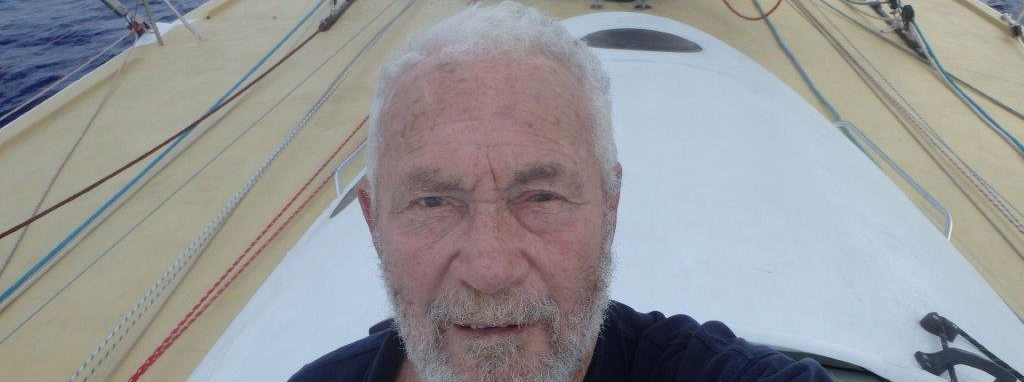Sir Robin Knox-Johnston: I’m gritting my teeth in Route du Rhum race
12 November 2014
Sir Robin Knox-Johnston is within the Azores High Pressure System that is spreading southwards and gybed last night to try and reach stronger winds south of the high as quickly as possible.
The move meant he dropped from fifth to seventh position in the Rhum class of the Route du Rhum – Destination Guadeloupe race. But the battle is very much still on with only 65 miles separating Sir Robin and third-placed boat, Cap Au Cap Location, skippered by Wilfrid Clerton .
There is currently around 10 knots or less of wind, but Clipper Race meteorologist Simon Rowell said he expected it to veer a point - maybe two - today which will help.
Sir Robin, on his Open 60 Grey Power, is currently 500 miles north of the Cape Verde Islands off the West African coast with a distance to finish of 2173 miles as of 1000 GMT.
Class leader Anne Caseneuve on Aneo is 1648 miles from the finish at Point-a-Pitre, Guadeloupe.
Here is Sir Robin's latest blog sent Wednesday morning.
Last night, for a while, it was more like the Doldrums.Perfect for a cruise across the Atlantic, but frustrating for racing. I slept in the cockpit last night so I could see the Windex which indicates where the wind is coming from at the masthead, and adjust course as the wind shuffled around. Eventually I reached a satisfactory setting and the next thing I knew three hours had passed. That is the longest single sleep I have had since the start and it felt wonderful.
It looks as if the Azores High is splitting, and certainly its southern extremity has moved south. Those who got south earlier have benefited, those of us who were trying to get south but had not got far enough, are suffering. To avoid going closer into the High I gybed yesterday evening and have been on a direct south course since, so I can get to stronger winds south of the high. It’s gritted teeth time.
I know I was within six miles of third position, so this inevitably effects my position in class, but there are five of us within 50 miles of each other on distance to the finish, so plenty for us all to go for.
Gybing, in fact tacking or a sail change makes me appreciate just how big everything is on these boats. It’s nothing compared to the Ultime class of course, the big multihulls that are now all finished. How those guys cope is a miracle and a testament to their ability, and frankly, their courage.
But the trouble with the larger boats is not that you cannot do all the jobs, it’s just you cannot do them as effectively. When I did this race in 1982 on my 70 foot Catamaran Olympus 5, I could gybe the boat, including gennaker, in seven minutes. Now that process takes 20 minutes on this boat.
Maybe I should get a smaller boat for future races?
RKJ
Join The Race